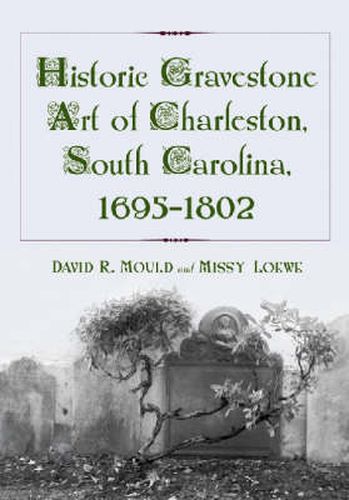Readings Newsletter
Become a Readings Member to make your shopping experience even easier.
Sign in or sign up for free!
You’re not far away from qualifying for FREE standard shipping within Australia
You’ve qualified for FREE standard shipping within Australia
The cart is loading…






This title is printed to order. This book may have been self-published. If so, we cannot guarantee the quality of the content. In the main most books will have gone through the editing process however some may not. We therefore suggest that you be aware of this before ordering this book. If in doubt check either the author or publisher’s details as we are unable to accept any returns unless they are faulty. Please contact us if you have any questions.
Here lyes Buried the Body of Martha Peronneau…Departed this life December ye 14th 1746 aged 13 Years. Such an inscription was typical of 18th century grave markers in Charleston, South Carolina. Many epitaphs went on to reveal much more about the deceased: personality, religious beliefs, career accomplishments and social position. Attention to social matters was a natural part of life in Charleston, where descendants of the city’s 17th century British founders sought to recreate the class-conscious culture of aristocratic England. The merging of this culture with influences from French Huguenots, German Lutherans, Scottish Presbyterians and Spanish Jews led to funeral practices unique in the American colonies. Focusing on pieces created between 1695 and 1802, this volume offers a detailed examination of the tombstones and grave markers from 18th century Charleston. It not discusses only the general trends and the symbolism of the period’s gravestone art - such as skulls, portraits, ascending souls, and stylized vegetation - but also examines specific instances of these popular motifs. Tombstones from Charleston’s oldest and most significant churches, including the Circular Congregational Church, St. Phillip’s Anglican Church, the French Huguenot Church and the First (Scots) Presbyterian Church, are explored in detail. The work looks at how Charleston gravestones differed from funerary art elsewhere in the American colonies, and reveals them to be some of the earliest examples of American sculpture. A guide to colonial gravestone symbols and a glossary of relevant Latin terms are also included.
$9.00 standard shipping within Australia
FREE standard shipping within Australia for orders over $100.00
Express & International shipping calculated at checkout
This title is printed to order. This book may have been self-published. If so, we cannot guarantee the quality of the content. In the main most books will have gone through the editing process however some may not. We therefore suggest that you be aware of this before ordering this book. If in doubt check either the author or publisher’s details as we are unable to accept any returns unless they are faulty. Please contact us if you have any questions.
Here lyes Buried the Body of Martha Peronneau…Departed this life December ye 14th 1746 aged 13 Years. Such an inscription was typical of 18th century grave markers in Charleston, South Carolina. Many epitaphs went on to reveal much more about the deceased: personality, religious beliefs, career accomplishments and social position. Attention to social matters was a natural part of life in Charleston, where descendants of the city’s 17th century British founders sought to recreate the class-conscious culture of aristocratic England. The merging of this culture with influences from French Huguenots, German Lutherans, Scottish Presbyterians and Spanish Jews led to funeral practices unique in the American colonies. Focusing on pieces created between 1695 and 1802, this volume offers a detailed examination of the tombstones and grave markers from 18th century Charleston. It not discusses only the general trends and the symbolism of the period’s gravestone art - such as skulls, portraits, ascending souls, and stylized vegetation - but also examines specific instances of these popular motifs. Tombstones from Charleston’s oldest and most significant churches, including the Circular Congregational Church, St. Phillip’s Anglican Church, the French Huguenot Church and the First (Scots) Presbyterian Church, are explored in detail. The work looks at how Charleston gravestones differed from funerary art elsewhere in the American colonies, and reveals them to be some of the earliest examples of American sculpture. A guide to colonial gravestone symbols and a glossary of relevant Latin terms are also included.